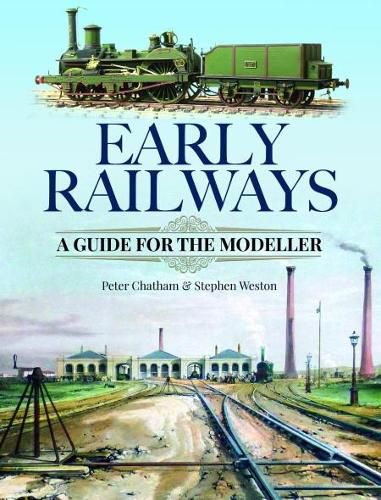Readings Newsletter
Become a Readings Member to make your shopping experience even easier.
Sign in or sign up for free!
You’re not far away from qualifying for FREE standard shipping within Australia
You’ve qualified for FREE standard shipping within Australia
The cart is loading…






Early Railways A Modellers Guide will encourage and support the modelling of the earliest period of railway history, from the very beginnings of steam traction at the start of the nineteenth century, up to about 1880; a period which for British modellers has scarcely been covered in book form. Over these few decades the railways evolved from something, which at the start was markedly different, into a scene that any present-day railwayman would recognise. It is a time with much to commend it from a modellers point of view. The trains were much shorter and therefore easier to fit into the limited space most of us have available as, correspondingly, were the station layouts, especially at the beginning of the period. Instead of at least 12 or 13 feet for a modern steam express, and a minimum curve radius of 6 feet, an 1840 express of a loco and a dozen carriages might be no more than about 6 feet long and, behind the scenes at least, can take curves of no more than 2 or 3 feet radius, as well as being able to instantly catch the eye of the viewer. AUTHORS: After working as a metallurgist, Peter Chatham went into model railways, manufacturing a range of kits, parts and transfers. He was production manager for the London & North Western Railway Societys Journal and contributed many articles. He is now Parliamentary Trains’ researcher and kit designer. After working as a geologist, Stephen Weston went on to develop own company, which specialises in the stabilisation of old shallow mine workings and mineshafts. He joined the London & North Western Railway Society and for three years was the Journal Editor. His interest in the London & Birmingham Railway and 0 Gauge modelling resulted in the formation of Parliamentary Trains. Stephen is responsible for kit production and marketing. 150 colour and b/w illustrations, diagrams and track plans
$9.00 standard shipping within Australia
FREE standard shipping within Australia for orders over $100.00
Express & International shipping calculated at checkout
Early Railways A Modellers Guide will encourage and support the modelling of the earliest period of railway history, from the very beginnings of steam traction at the start of the nineteenth century, up to about 1880; a period which for British modellers has scarcely been covered in book form. Over these few decades the railways evolved from something, which at the start was markedly different, into a scene that any present-day railwayman would recognise. It is a time with much to commend it from a modellers point of view. The trains were much shorter and therefore easier to fit into the limited space most of us have available as, correspondingly, were the station layouts, especially at the beginning of the period. Instead of at least 12 or 13 feet for a modern steam express, and a minimum curve radius of 6 feet, an 1840 express of a loco and a dozen carriages might be no more than about 6 feet long and, behind the scenes at least, can take curves of no more than 2 or 3 feet radius, as well as being able to instantly catch the eye of the viewer. AUTHORS: After working as a metallurgist, Peter Chatham went into model railways, manufacturing a range of kits, parts and transfers. He was production manager for the London & North Western Railway Societys Journal and contributed many articles. He is now Parliamentary Trains’ researcher and kit designer. After working as a geologist, Stephen Weston went on to develop own company, which specialises in the stabilisation of old shallow mine workings and mineshafts. He joined the London & North Western Railway Society and for three years was the Journal Editor. His interest in the London & Birmingham Railway and 0 Gauge modelling resulted in the formation of Parliamentary Trains. Stephen is responsible for kit production and marketing. 150 colour and b/w illustrations, diagrams and track plans